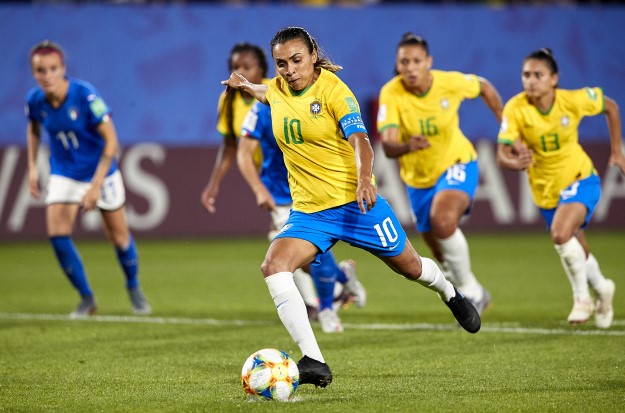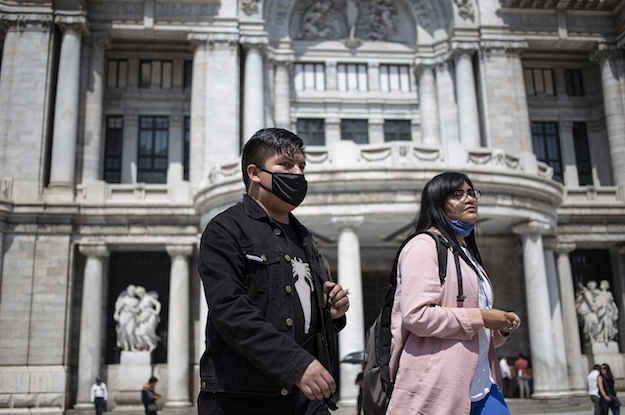BUENOS AIRES – Cafés and restaurants in Buenos Aires buzzed with debate. Op-eds and editorials in Argentine newspapers expressed alarm. Priests launched a campaign of opposition. It was 1928, and women were playing soccer. An article in a Chilean magazine at the time noted the sudden growth of the sport – and contemplated possible detrimental effects on society at large.
Nearly 100 years later, women’s role in sports remains a source of anger, argument and inspiration. While women continue to fight through discrimination to claim their place on the pitch, a portion of the spectator class views gender equality in sports as a sign of the apocalypse.
Futbolera: A History of Women and Sports in Latin America, by Brenda Elsey and Joshua Nadel, shows that this fight is nothing new, and indeed part of a broader, decades-old struggle against machista mores in the region. That these recurring battles have been repeatedly lost from memory is a sign of just how stout the opposition to women in sports in the region has been.
Women’s soccer in Latin America began almost simultaneously with the men’s game, but from the outset was “seen as violating the norms of respectable behavior,” Elsey and Nadel write. “As football became increasingly a part of national identities in the region, women faced greater exclusion.”
Attacks from the male-dominated sports community, as well as government restrictions in many countries, drove some female athletes underground. In Brazil, for example, women’s soccer was banned from 1941 to 1979 – ostensibly because of pseudo-science health concerns that it would negatively impact women’s fertility.
Even when playing wasn’t illegal outright, women were told they had the wrong physique for soccer, that the sport was too violent, or that it would turn them into lesbians. “The threat (futboleras) caused to notions of appropriate womanhood, to masculine hegemony, and to perceptions of women’s public health were too much to be ignored,” the authors write. Those who found a way to play regardless were, by definition, transgressors. Many still are.
Elsey and Nadel build their case from press materials as well as government documents, oral histories, informal memoirs, fan websites, and photographs. In so doing, they reconstruct stories that are largely unknown, even in the countries in which they occurred. The rich history of Argentine women’s soccer documented in the book – the team placed fourth in the second-ever women’s world championship in Mexico in 1971 – is virtually unknown in a country that comes to a halt for men’s soccer finals.
Through their research, the authors navigate the challenge of reconstructing a largely forgotten, underground history, though at times the result may be too exhaustive for casual readers who, for example, might not want to wade through a city-by-city account of Brazilian female teams in the 1930s.
Elsey and Nadel’s analysis also sheds light on deep differences in how women athletes were viewed in countries across the region: seriously in Argentina, derisively or sexually in Chile, and simultaneously inspirational and nonthreatening in Mexico, for example.
Beyond soccer, Futbolera focuses more broadly on women’s relationship with sports during the 20th century in Latin America, and the underlying philosophies that both spurred female athletics programs and sought to quash them. Athleticism itself was not necessarily objectionable. In fact, authorities seeking to eugenically improve citizen health often pushed female physical education and training – with a focus exclusively on their role as maternal vessels.
Women were excluded from soccer specifically, though, because of its growing importance to national, virile identity. Futbolera shows how female athletes consistently pushed back against rules and objections over the years. Female soccer players were always around, the authors write, even in Brazil where they were formally banned: “Had anybody bothered to look for women’s soccer … they would have found it.”
While women are still not treated as equals, the debate over their role in sports has evolved over time. Biological destiny is no longer an overt element of concern in discussion over women’s soccer. Instead, female athletes are forced to prove their financial worth: the current struggles revolve around professionalization and the benefits it confers in terms of playing, structure and public reach.
In this sense especially, huge disparities remain. Argentina’s national team, which narrowly missed qualifying for the knockout round in the Women’s World Cup this summer, features players who have mostly played semi-professionally at best, juggling administrative or cleaning jobs for teams they play for in Argentina.
Futbolera is therefore an important contribution not just to sports history, but to Latin American history as a whole. Indeed, as activists in the region show, getting women onto the field is still a key battle for defending their rights, their bodies and, ultimately, their equality as citizens in countries where pasión por el fútbol is everything.
—
Jordana Timerman is a freelance reporter in Buenos Aires. She edits the Latin America Daily Briefing.






